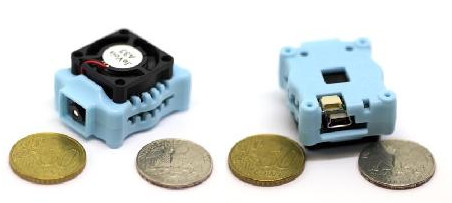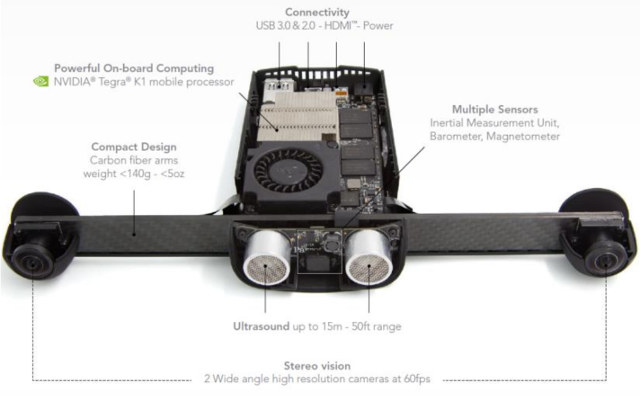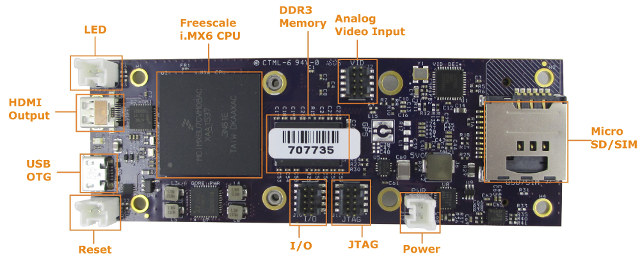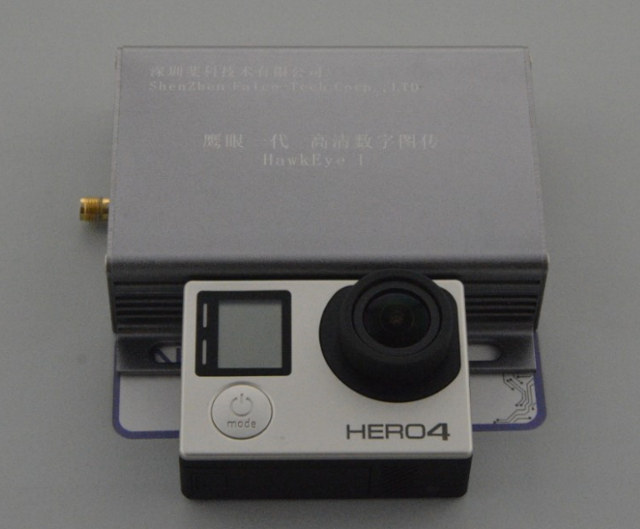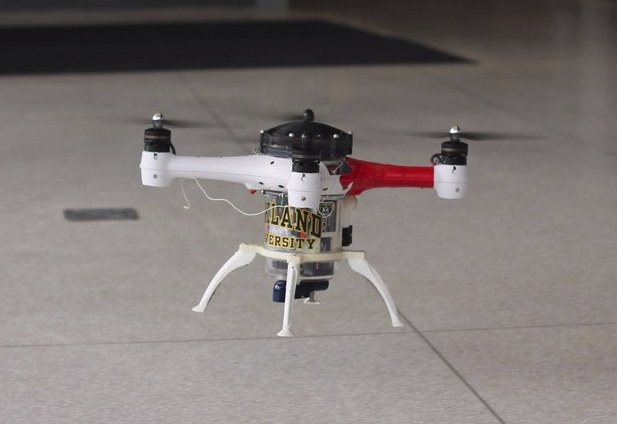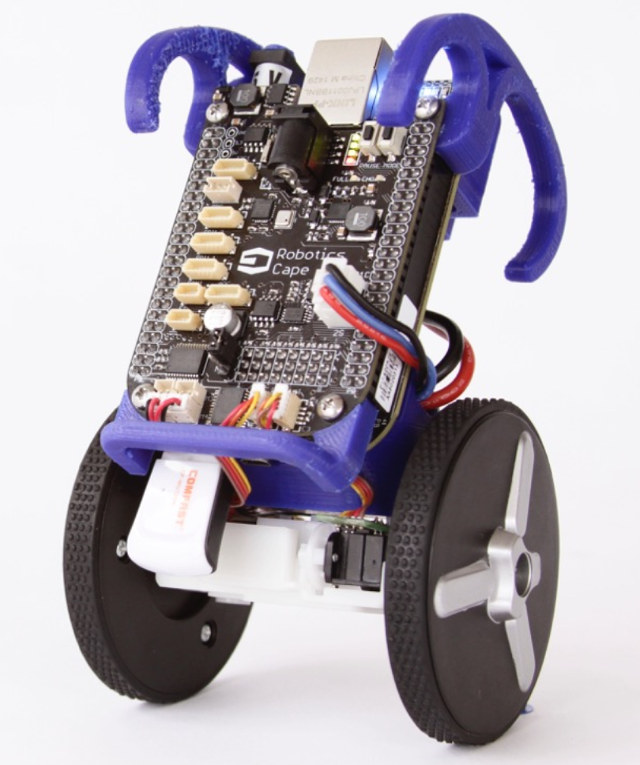FOSDEM (Free and Open Source Software Developers’ European Meeting) is a 2-day free event for software developers to meet, share ideas and collaborate that happens on the first week-end of February, meaning it will take place on February 4 & 5, 2017 this year. FOSDEM 2017 will features 608 speakers, 653 events, and 54 tracks, with 6 main tracks namely: Architectures, Building, Cloud, Documentation, Miscellaneous, and Security & Encryption. I won’t be there, but it’s always interesting to look at the schedule, and I made my own virtual schedule focusing especially on talks from “Embedded, mobile and automotive” and “Internet of Things” devrooms. Saturday 4, 2017 11:00 – 11:25 – Does your coffee machine speaks Bocce; Teach your IoT thing to speak Modbus and it will not stop talking, by Yaacov Zamir There are many IoT dashboards out on the web, most will require network connection to a server far […]
JeVois-A33 is a Small Quad Core Linux Camera Designed for Computer Vision Applications (Crowdfunding)
JeVois Neuromorphic Embedded Vision Toolkit – developed at iLab at the University of Southern California – is an open source software framework to capture and process images through a machine vision algorithm, primarily designed to run on embedded camera hardware, but also supporting Linux board such as the Raspberry Pi. A compact Allwinner A33 has now been design to run the software and use on robotics and other projects requiring a lightweight and/or battery powered camera with computer vision capabilities. JeVois-A33 camera: SoC – Allwinner A33 quad core ARM Cortex A7 processor @ 1.35GHz with VFPv4 and NEON, and a dual core Mali-400 GPU supporting OpenGL-ES 2.0. System Memory – 256MB DDR3 SDRAM Storage – micro SD slot for firmware and data 1.3MP camera capable of video capture at SXGA (1280 x 1024) up to 15 fps (frames/second) VGA (640 x 480) up to 30 fps CIF (352 x 288) […]
Parrot S.L.A.M Dunk is a Ubuntu & ROS Computer with 3D Depth Cameras for Drones & Robots
Parrot and Canonical have partnered to develop the Parrot S.L.A.M.dunk development kit for the design of applications for autonomous navigation, obstacle avoidance, indoor navigation and 3D mapping for drones and robots, and running both Ubuntu 14.04 and ROS operating systems. The name of the kit is derived from its “Simultaneous Localization and Mapping algorithm” (S.L.A.M) allowing for location without GPS signal. Parrot S.L.A.M Dunk preliminary specifications: SoC – NVIDIA Tegra K1 processor Camera – Fish-eye stereo camera with a 1500×1500 resolution at 60fps Sensors – Inertial-measurement unit (IMU), ultrasound sensor up to 15 meters range, magnetometer, barometer Video Output – micro HDMI USB – 1x micro USB 2.0 port, 1x USB 3.0/2.0 port Weight – 140 grams Parrot S.L.A.M dunk can be fitted various drones and robotic platforms such as quadcopters and fixed-wings, rolling robots and articulated arms using mounting kits. The computer module is then connected to the host […]
Gateworks Ventana GW5530 SBC is Designed for Drones, Robots, and Digital Signage
Gateworks Ventana is a family of boards based on NXP i.MX6 processor designed for embedded applications, and often include one or more mini PCIe ports for expansion. Their latest single board computer – Ventana GW5530 – is powered by an NXP i.MX 6Dual processor coupled with 512MB RAM, 256MB storage, a mini PCIe port, a micro SD / SIM card slot, micro HDMI output, and some I/Os. Ventana GW5530 specifications: SoC – NXP i.MX6 Dual Core ARM Cortex-A9 processor @ 800MHz with Vivante 2D and 3D GPUs System Memory – 512MB DDR3 (Up to 2GB as option) Storage – 256MB flash (Up to 2GB as option), micro SD/SIM card slot, serial configuration EEPROM Video & Audio Output – micro HDMI 1.4 port Connectivity – Optional u-blox EVA-M8M GPS Receiver with MMCX or u.FL Antenna Connector USB – 1x micro USB 2.0 OTG Port Sensors – 9-axis inertial module (accelerometer/gyro/magnetometer) Expansion […]
HawkEye I is a Compact & Lightweight COFDM / DVB-T Video Transmitter with Up to 10 km Range
Shenzhen Falco-Tech Corp has designed a small COFDM transmitter mostly useful for drones, unless you want to make you own very local TV station, that can transmit video from an HDMI camera such as GoPro Hero 4, and compatible with any DVB-T TV tuners as it sends the video unencrypted. HawkEye I DVB-T transmitter specifications: Transmission – COFDM technology Channel bandwidth – 6/7/8MHz (optional) Frequency – 200MHz-2400Mhz (optional) Forward coding – 1/2,2/3,3/4,5/6,7/8 Guard interval – 1/32,1/16,1/8,1/4 Range – Up to 1.5km to 10km SMA antenna connector Video Input – CVBS or HDMI Video Codec – H.264/H.265 encoding with hardware acceleration Resolution – SD/D1/720P/1080p Framerate – 25/30/60 fps Power Supply – 12V via 2-pin terminal Dimensions – 84 x 25 x 90mm (Aluminum case) Weight – 143 grams Operating Temperature Range – -20~60 degrees Celsius There’s no word about power consumption, so it’s unclear how it would impact fly time. I’m […]
Embedded Linux Conference 2016 and OpenIoT Summit 2016 Schedule
The Embedded Linux Conference 2016 and the OpenIoT summit 2016 will take place on April 4 – 6, 2016 in San Diego, California, and over 800 attended will meet including kernel & system developers, userspace developers, and product vendors. The Linux Foundation has recently published the schedule, so I’ve had a look at some of the talks, and designed my own virtual schedule to find out more the current development focus although I won’t attend. Monday April 4 10:40am – 11:30am – Linux Connectivity for IoT by Marcel Holtmann, Intel OTC There are many connectivity solutions that available for IoT. For example Bluetooth Low Energy, 802.15.4, Zigbee, OIC, Thread and others. This presentation will provide and overview of the existing technology and upcoming standard and how they tie into the Linux kernel and its ecosystem. 11:40 – 12:30 – BoF: kernelci.org: A Million Kernel Boots and Counting by Kevin Hilman, […]
Loon Copter is a Drone that Flies, Floats and Dives Underwater
Most drones simply fly, while some robots can dive underwater, but Loon Copter, a project by Oakland University’s Embedded Systems Research Laboratory, can fly, float on the water, and dive underwater just like a duck, hence its name. I could not find much technical details about the drone, but since I discovered it via Atmel on Google+, I assume some soon-to-be Microchip AVR MCUs might be involved. It flies like any quadcopter, then it can land on water and move sideways with the blades rotating in the air. The submerged mode is interesting. The drone fills itself with water until the blades are under water, and then rotates 90 degrees to roam in the water. Once it’s done it ejects the water to get back to the surface. The drone is also equipped with camera and sensors to explore its surroundings. Some potential applications include underwater survey of corals or […]
BeagleBone Blue Board is Designed for Robots and UAVs
Beagleboard.org organization already tried to go Blue with BeagleBone BlueSteel-Basic that was supposed to a the single board computer to be used by OEM to integrate into their design instead of BeagleBone Black development board. For some unknown reasons this never happened, but they’ve now reused the color to introduce BeagleBone Blue board designed for robotics and UAVs. BeagleBone Blue specifications: SoC – Texas Instruments Sitara AM3358 Cortex A8 @ 1 GHz + PowerVR SGX530 GPU System Memory – 512 MB DDR3 Storage – 4 GB 8-bit on-board flash storage Connectivity – 802.11 b/g/n, Bluetooth 4.0 LE USB – USB 2.0 client and host Motor Control – 8x 6V servo out, 4x DC motor out, 4x quad enc in Sensors – 9 axis IMU, barometer “Easy connect Interfaces” – GPS, DSM2 radio, UARTs, SPI, I2C, analog, buttons, LEDs Power / Battery – 2-cell LiPo support with balancing, 6-16V charger input […]



